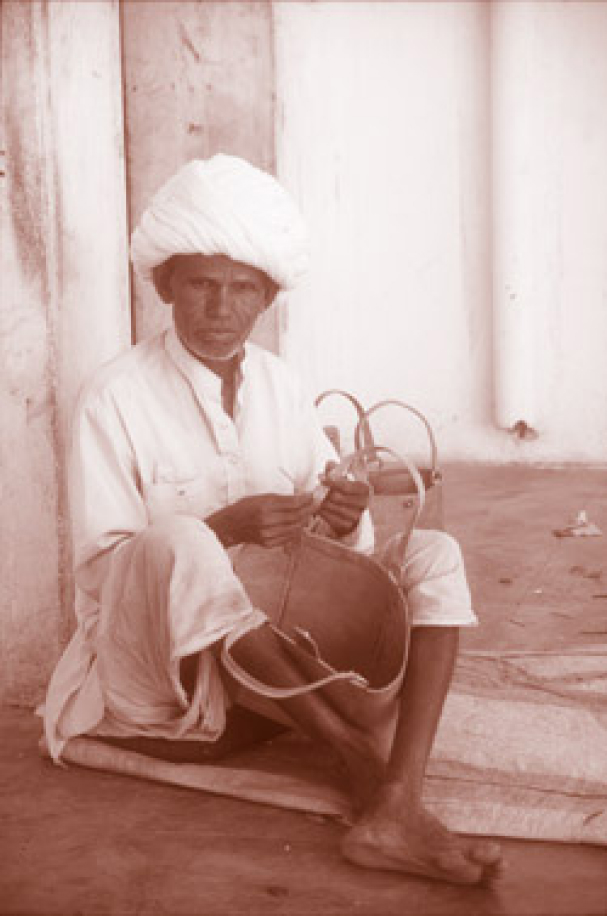Our History
The leathercraft is nearly 300 years old in Jawaja block. With almost 200 villages and a large population of approximately 85,000 people, the block is extremely backward, with extreme climatic conditions. The land is arid, and water is a scarce resource. The area is drought-prone and flood-prone, making it even more vulnerable. In this challenging terrain, a deeply entrenched caste system has been particularly oppressive for the artisan community that lies at the bottom rung of the social hierarchy. In a context like this, the contribution of Artisans’ Alliance of Jawaja and its associations have been worth noting.
As an association of Artisans’ Alliance of Jawaja, we are a product of extraordinary history, spanning over 35 years. It is a history dotted with experiments in self-reliance. The first such ground breaking experiment in education for self-reliance was the Rural University experiment, which dates back to 1975, where the artisans of Jawaja were the catalysts. Under Professor Ravi J. Mathai’s leadership, the first full-time Director of the Indian Institute of Management- Ahmedabad (IIM-A), the experiment sought to connect artisans with contemporary disciplines and knowledge institutions in a relationship of mutual respect and learning. The experiment also aimed at understanding the extent to which new disciplines from modern bastions of learning could be applied to livelihoods in a largely unorganized sector to tackle issues of poverty and discrimination. To this end, artisans were linked to institutes like IIM-A and NID, which had a far-reaching influence well beyond the crafts sector. It significantly impacted the efforts of civil society in the decades thereafter.
The project was a key landmark because it attempted to influence rural education through development activities that catered to the local needs. It introduced elements like vegetable cultivation, horticulture, animal husbandry, wool and cotton weaving, spinning, rope-making, leather tanning, and leather products, which opened an array of social and economical choices for people in Jawaja block. Subsequently, besides wool and cotton, leather products also emerged prominently as part of the Jawaja’ brand’, famous as the Jawaja Leather Association today.

Through this initiative, people became more self-reliant and began to manage livelihood-related activities like raw material procurement, finances, bank dealings, the know-how of design and technology, and greater command over marketing processes. With greater control over their lives and livelihoods, people gradually moved away from exploitative power structures. As the number of participating villages grew, a network of mutually beneficial relationships grew more substantial, with one teaching the other.
Gradually, the first ‘Jawaja collections’– a result of collaborations between artisans and NID designers began to emerge. As the product range began to create a distinct ‘Jawaja’ identity, the artisans came together as Artisans’ Alliance of Jawaja. Now, AAJ is known nationally and internationally for its unique product line. It has empowered the artisans and restored a sense of dignity to this historically oppressed community. Traditional artisans have become contemporary designers and trainers, willing to share their knowledge and look forward to an even brighter future!

